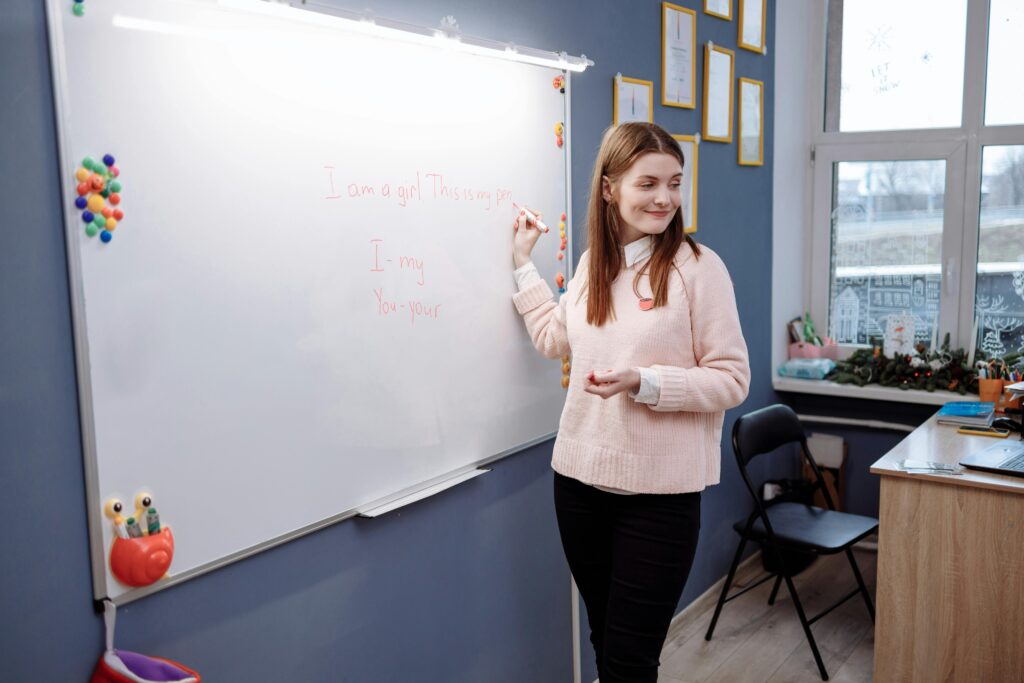
Learning the present perfect tense in Spanish is essential for speaking fluently. It’s used to talk about past actions that are still relevant today. Therefore Let’s break it down in a simple way, with plenty of examples to help you understand!
What Is the Present Perfect?
The present perfect (pretérito perfecto) is used to describe actions that:
- Happened at an unspecified time in the past.
- Still matter or affect the present.
For example, in English, you might say, “I have eaten,” which means you ate recently, and it affects the current situation. In Spanish, the structure is similar:
[Haber] + [Past participle]
The Verb Haber
The verb haber is crucial in forming the present perfect tense. Here’s how to conjugate it:
- Yo he (I have)
- Tú has (You have)
- Él/ella ha (He/She has)
- Nosotros hemos (We have)
- Vosotros habéis (You all have) – informal, Spain only
- Ellos/ellas han (They have)
Past Participles
Regular verbs follow a simple pattern to form the past participle:
- -ar verbs: Replace -ar with -ado (e.g., hablar → hablado).
- -er and -ir verbs: Replace -er or -ir with -ido (e.g., comer → comido, vivir → vivido).
Examples of the Present Perfect
Here are a few examples to see how the present perfect works in Spanish:
- He comido (I have eaten)
- Tú has estudiado (You have studied)
- Ella ha viajado (She has traveled)
- Nosotros hemos trabajado mucho (We have worked a lot)
- Ellos han visto la película (They have seen the movie)
These sentences show actions that are relevant to the present.
When Do We Use the Present Perfect?
Here’s when you’ll use the present perfect tense:
- For recent actions:
¿Has comido? (Have you eaten?) - For life experiences (without specifying when):
He visitado España. (I have visited Spain.) - For actions that started in the past and continue now:
He vivido en Singapur por cinco años. (I have lived in Singapore for five years.)
Common Mistakes to Avoid
- Don’t mix it with the simple past:
The simple past is used for actions that have no connection to the present. The present perfect always ties the past action to the present moment. - Make sure to conjugate haber correctly:
Use the right form of haber depending on the subject of the sentence. For example, yo he (I have), nosotros hemos (we have).
Why Learn the Present Perfect?
Mastering the present perfect is crucial for speaking fluent Spanish. It allows you to discuss past experiences, ongoing actions, and more. Whether you’re traveling, making new friends, or working in a Spanish-speaking country, you’ll use this tense often.
Ready to Learn Spanish?
At Spanish School Singapore, we’ll guide you through the present perfect and many other Spanish tenses. Our native teachers offer personalized lessons, whether you prefer in-person or online classes.
Book your trial class today at Spanish School Singapore and start mastering Spanish!
Want More Tips?
Check out this link for more details on the present perfect tense in Spanish. It’s a great resource to deepen your understanding.
By following these tips and practicing regularly, you’ll soon use the present perfect like a pro. Join our classes at Spanish School Singapore to learn from experienced teachers and become fluent in Spanish!
#SpanishClasses #LanguageLearning #SpanishForBeginners #SpanishInSingapore #SpanishLanguage #StudySpanish #SpanishCulture #ChristmasInSpanish #SpanishSchool
